Lian Ping, general manager of ICCSINO, delivered a speech: The new energy industry leads the transformation of the global energy structure
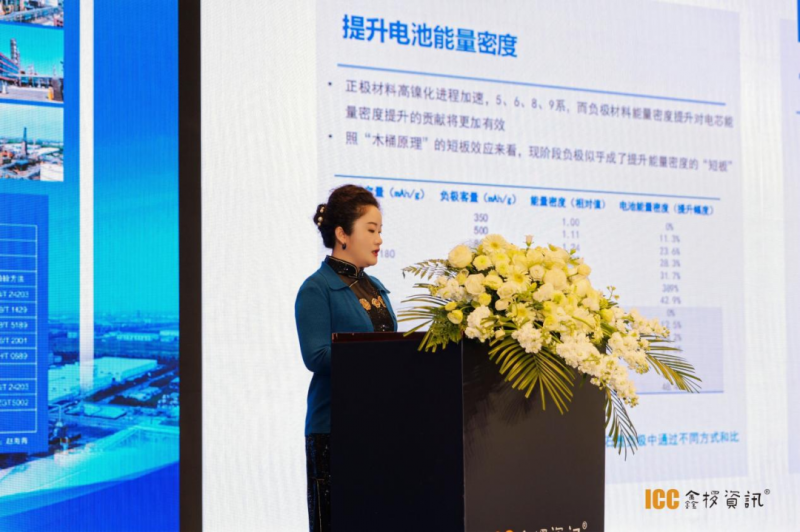
Lian Ping said that the new energy industry is leading the profound changes in the global energy structure with huge potential and broad prospects. In the development of new energy, lithium battery anode materials are an indispensable key link. China's anode material industry has formed strong competitiveness in the international market, but it still faces many challenges such as technological breakthroughs and industrial chain coordination. She called for increasing investment in R&D and innovation, promoting the formation of new quality productivity, and enhancing new momentum for industry development. She also hoped that this forum could build a communication platform to promote the integrated development of the entire anode material industry chain.
Li Fengfeng, Chairman of Shanshan Technology, delivered a speech: Calling for upstream and downstream collaboration to respond to market challenges
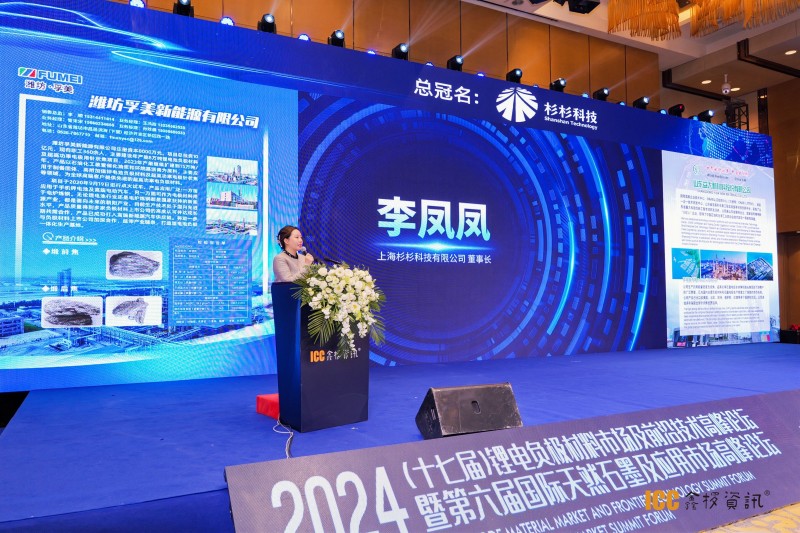
Ms. Li Fengfeng reviewed Shanshan Technology's deployment in the lithium battery material industry since 1999, witnessed the rise of China's lithium battery industry, and expressed her heartfelt thanks to friends who have always supported Shanshan's development. She emphasized that innovation is a common theme faced by anode material companies, and they need to promote technological innovation, service innovation and R&D innovation through open innovation and upstream and downstream cooperation. She believes that the current lithium battery industry is facing cyclical adjustments, the anode material industry is also further adjusted and optimized, and the industry will enter a "volume" normal state. She called for collaborative cooperation across the upstream and downstream industrial chains to address market challenges. Li Fengfeng said that the current global penetration rate of new energy vehicles is less than 30%, and the prospects are broad. Shanshan has laid out an integrated base for anode materials with an annual output of 100,000 tons in Finland, and will build factories in more regions around the world in the future.
Wu Zeyi, chief engineer of Jinhuineng New Materials, shares: Steady progress, innovation leads industry development
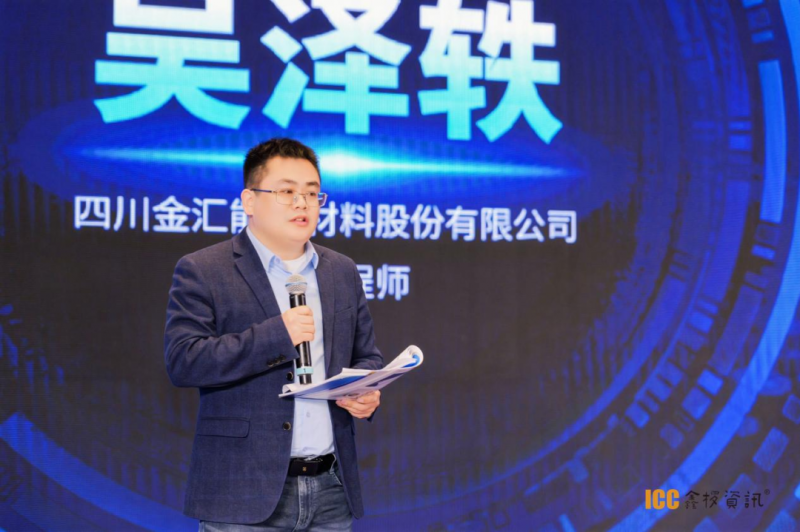
In his speech, Wu Zeyi shared some of his thoughts on the development of the industry and introduced the company's innovation path. Wu Zeyi said frankly that "everything is in a hurry" now, but it still needs to "level the land" to move forward steadily. He revealed that the company cooperated with Huawei to develop high-capacity silicon-based anodes and explained process innovations such as vacuum dynamic domain.
Fu Chengzhi, general manager of Maoming Hongxin Fine Chemical Co., Ltd., the co-organizer, introduced the company’s overview and its layout in the field of lithium battery anode materials. Fu Chengzhi said that the company has strong strength in raw material production and technology research and development, and looks forward to win-win cooperation with peers in the industry.
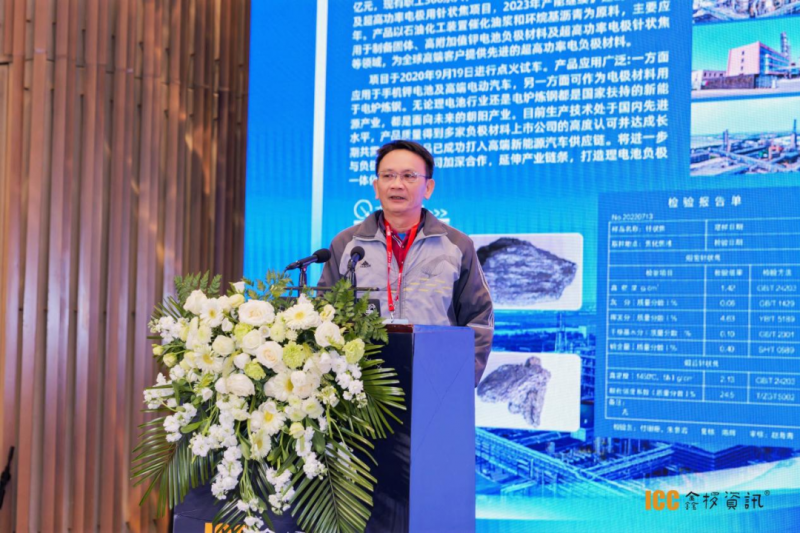
The inspiring speeches of the four leaders kicked off this summit forum.
Wang Jionghui, Chairman of China Minmetals Graphite Industry: Application and Prospects of Natural Graphite in Strategic Emerging Industries
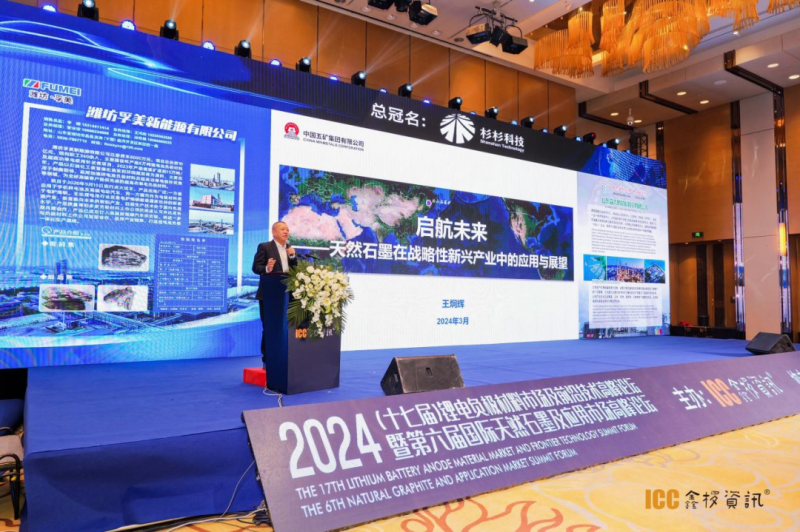
The opening speaker was Wang Jionghui, Chairman of China Minmetals (Heilongjiang) Graphite Industry Co., Ltd. His speech was titled "Setting the Future - Application and Prospects of Natural Graphite in Strategic Emerging Industries." Wang Jionghui pointed out that the graphite industry is currently facing a crisis and a large number of products are in surplus. Therefore, he decided to use the title "Sail the Future" to elaborate on his understanding of this industry and the path to innovation. He emphasized that there are significant differences in the production process and environmental properties of natural graphite and artificial graphite. Not only that, there are currently more than 30 new graphite mines to be developed at home and abroad. The industry is facing squeeze from new entrants, and problems such as low resource utilization rate and scattered pollution from tailings treatment in the existing mining, selection and processing processes are relatively common.
Facing industry difficulties, Wang Jionghui listed the application prospects of natural graphite in nine emerging industries: new generation information technology, biotechnology, new energy, new materials, high-end equipment, new energy vehicles, green environmental protection, aerospace and marine equipment. He believes that these require giving full play to the unique structural advantages of natural graphite such as porous and high specific surface area, and achieving breakthroughs through innovative processes.
At the same time, Wang Jionghui said that Minmetals attaches great importance to the graphite industry. As early as 2010, Minmetals listed graphite as a key new technology mineral, integrated Heilongjiang resources, and promoted the integrated layout of the entire industry chain from resources to applied products. At present, Minmetals has built China's first green smart mine, realizing digital and unmanned operations; it has also carried out process transformation in mineral processing, spheroidization, high-purity graphite and other aspects to improve recovery rate and yield.
In addition to the layout of the resource end and production end, Wang Jionghui also focused on Minmetals' efforts in the research and development of new graphite materials. Specifically, it includes the use of porous structures to prepare silicon-carbon anode materials, the development of potassium and aluminum-ion battery cathode materials, innovations in expansion and spheroidization processes, etc., and progress has been made in application fields such as energy storage batteries and fast-charging batteries. At the same time, Minmetals is focusing on key technologies such as digitalization and intelligence in multiple company-owned laboratories in order to improve product performance and process efficiency.
Looking into the future, Wang Jionghui said that Minmetals will continue to build green and smart mines, expand high-end applications, and strive to become the world's leading carbon-based new materials industry group. Although the industry is currently facing difficulties with overcapacity, he believes that natural graphite still has broad prospects in emerging industries. Therefore, Minmetals will continue to innovate and develop, explore new growth points, promote green and low-carbon transformation, and contribute to the realization of carbon neutrality. Finally, he called on us to join hands and set sail for a better future together with an innovative and pragmatic spirit.
Yue Min, Chairman of Carbon One New Energy: Discussing ways to disrupt the anode industry
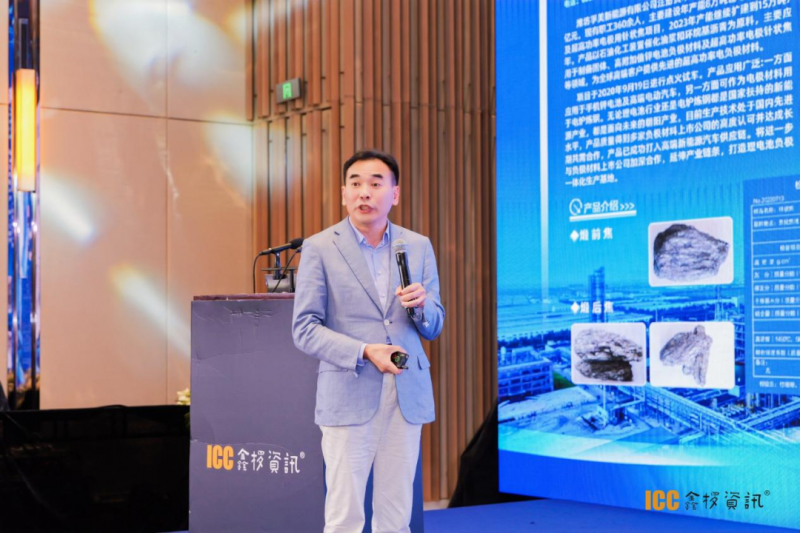
Yue Min first systematically analyzed the dramatic changes in the global economic order in recent years, from "globalization" to "anti-globalization". Europe and the United States have begun to reshape new energy supply chains in order to eliminate risks. He pointed out that this trend brings serious challenges to China's anode industry.
At the same time, Yue Min said that the domestic anode industry is experiencing an unprecedented state of "involution", with overcapacity and intensified price wars. He suggested that enterprises should adopt three paths to deal with the double attack: first, "roll up themselves" and continuously improve their own strength; second, "roll up costs" and continue to innovate and reduce costs; third, "roll up innovation" and maintain independent innovation.
Finally, Yue Min also listed some specific innovation practices of Carbon One, such as functional polymer integrated artificial SEI membrane technology, silicon carbon anode technology, etc., pointing out the direction for achieving breakthroughs.
Xia Xiaomin, Deputy General Manager of CNBM Graphite New Materials: Current Situation and Trends of Natural Graphite in China
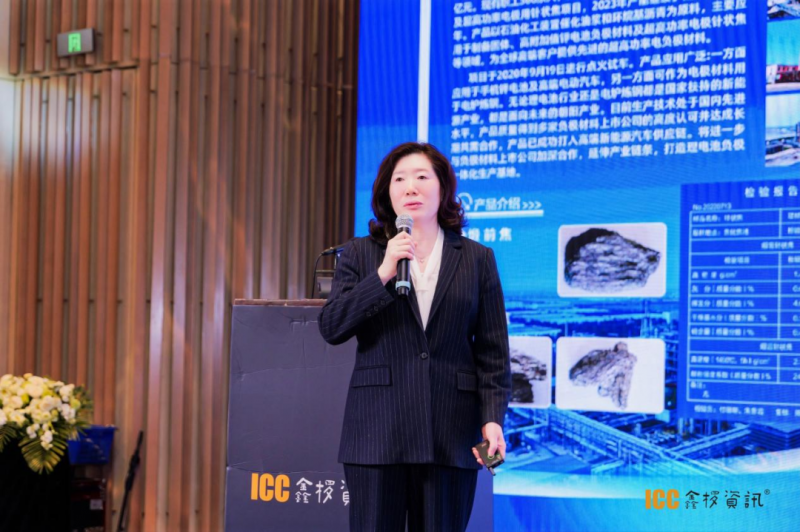

First, Xia Xiaomin analyzed the relevant policy orientations for the natural graphite industry at home and abroad. On the one hand, she pointed out that although the country encourages graphite imports, it has certain controls on exports. On the other hand, she used data to analyze the overall situation of the industry in 2023 - the supply side is hot and surplus, the demand side is cold and slowing down, prices are falling, and profits are narrowing, reflecting the characteristics of the decline stage. At the same time, she also sorted out the data on both ends of production and application, including capacity utilization, import and export volume, changes in main application fields, etc., and analyzed the sharp drop in prices.
Later, Xia Xiaomin predicted the development trend of the industry in the next five years. She believes that the next 2-3 years will continue to decline in a straight line, with oversupply, serious involution, and prices continuing to fall; and the next 2-3 years will enter a stable bottoming period, when there will be overcapacity, declining costs, and low operating conditions. situation; there may be a slight rebound until 2026, when industry concentration will increase, process technology will be innovative, and low-cost, high-performance products will also emerge. In addition, she also predicts that in the future, the degree of automation and intelligence will continue to increase, industry standardization will become higher and higher, central enterprises will lead industry integration, and industrial chain integrated production will become the general trend. She judged that traditional application fields may remain at the bottom for a long time, while anode materials driven by new energy sources are still an incremental market, and graphene and building materials also have certain application prospects.
Finally, Xia Xiaomin analyzed the opportunities and challenges that the development of the new energy automobile industry brings to the natural graphite industry. In terms of opportunities, she pointed out that the rapid growth of new energy vehicles will drive the expansion of demand for anode materials, the high environmental protection properties of natural graphite, and the presence of foreign manufacturers in China will bring opportunities to the industry. But at the same time, problems such as excess in the entire industry chain, unreduced cost pressure, imbalances in domestic and foreign markets, and insufficient high-end products will also bring many challenges to the industry. In view of this, she suggested that upstream and downstream enterprises in the market should avoid excessive competition, work towards differentiated production and high-end development, and continue to innovate to reduce costs and improve efficiency; at the same time, she called on central enterprises to jointly tackle key problems to break through technological bottlenecks and promote green automation and other core Competitiveness building to achieve high-quality development of the industry.
Zhang Cheng, deputy general manager of Honeycomb Energy Procurement Center: Current demand and development trends for anode materials in lithium batteries
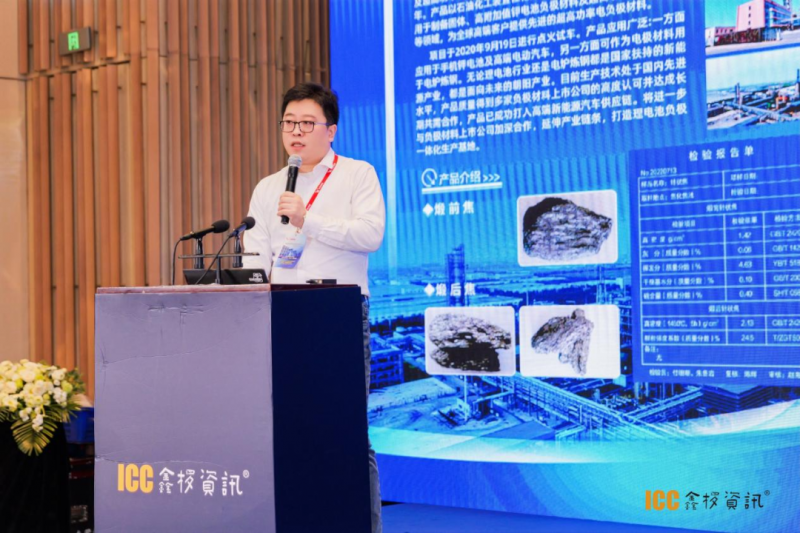
Zhang Cheng first introduced the overall status of new energy vehicles, power batteries, and anode material industries in 2023. He pointed out that in recent years, new energy vehicles have continued to grow explosively and have gradually entered a period of comprehensive market expansion. The penetration rate of new energy vehicles in China is increasing year by year. According to data from the China Automobile Association, sales will reach 9.495 million vehicles in 2023, a year-on-year increase of 37.9%. It is expected that sales will exceed 12 million vehicles in 2024 due to the car price war and trade-in policy . Europe will sell 2.95 million new energy vehicles in 2023, with a penetration rate of 24%; the United States will achieve sales of 1.402 million vehicles in 2023, with a penetration rate of 9%. The penetration rates of the two major markets are also steadily increasing.
Secondly, Zhang Cheng said that industry data shows that the proportion of PHEVs in new energy vehicles will increase from 24.4% to 31.7% in 2023, and is expected to exceed 50% in the next two years. The average charge of domestic new energy vehicles is 42KWH. BYD, Tesla and other car companies account for half of China's new energy vehicle market. In global battery production in 2023, Chinese, Japanese and Korean companies will dominate, with CATL, BYD, LG, Samsung and other manufacturers accounting for the highest proportions. Global energy storage battery production is 210GWH, a year-on-year increase of 70%, and is expected to reach 280GWH in 2024.
Finally, Zhang Cheng briefly introduced the latest layout and innovative progress of Honeycomb Energy in the fields of power batteries and anode materials. He suggested that upstream and downstream enterprises should strengthen collaborative innovation, optimize supply chain management, and promote high-quality and sustainable development of the industry.
Shanshan Technology Huang Jingxin: R&D tasks under the crossing cycle—to lay a solid foundation for innovation and build new productivity of anode materials
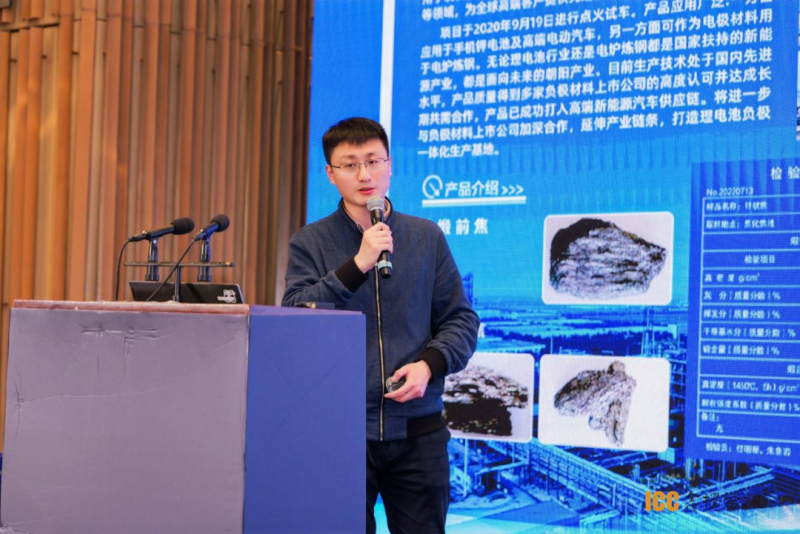
Dr. Huang reviewed the current status of the industry: cold outside and hot inside, production capacity and output continue to rise, but prices and profits continue to decline. He pointed out that if this situation continues , industry development will become increasingly difficult. Only through innovation to enhance product value and optimize production capacity structure can we achieve a breakthrough. At the same time, technology research and development is undergoing accelerated involution, especially in the fields of fast charging, silicon-based new materials and energy storage anode materials, and the pace of innovation and iteration has accelerated significantly.
Huang Jingxin introduced in detail the measures taken by Shanghai Shanshan Technology Company to respond to industry challenges. The company is vigorously expanding production and will achieve a production capacity of 600,000 tons by 2025. It is also building an overseas base of 100,000 tons in Finland to reduce costs and increase efficiency through a large integrated production base. In terms of R&D system, the company has a complete team covering mainstream anode materials such as graphite, silicon-oxygen, silicon-carbon, and hard carbon. Last year, we established a new base research and performance evaluation platform and continued to improve the engineering experiment platform to support product innovation. It has a rich product matrix in the fields of fast charging, energy storage and consumer batteries, and is accelerating the development and update of new products.
Huang Jingxin focused on elaborating on the company’s layout in basic research on anode materials. This includes conducting in-depth research on key factors that affect fast charging energy and cycle performance such as raw materials, body structure, coating layer, electrolyte, and pore structure, and establishing a complete characterization system. At the same time, we vigorously promote digitalization and intelligence, and use big data and artificial intelligence to realize intelligent data processing and establish databases, ultimately providing intelligent assistance for product research and development and improving innovation efficiency. He hopes that through 3-5 years of hard work, he will create leading technologies that will not be replaced within 5 years and promote high-quality development of the industry.
Wang Tengshi, Chairman of Hengke New Materials : Breakthrough and Innovation in Graphitization OEM
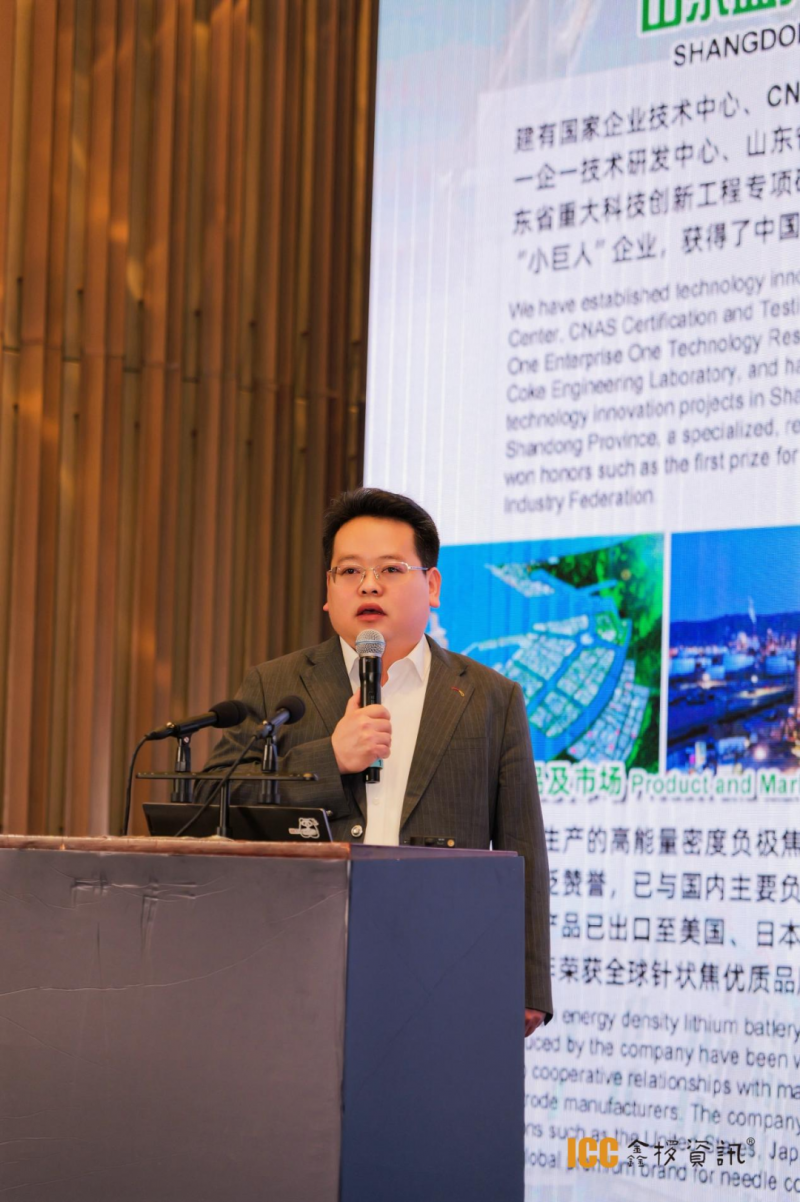
Wang Tengshi pointed out that the current period is a period of great change unseen in a century, and factors such as the COVID-19 epidemic and geopolitical conflicts have brought unprecedented turmoil and uncertainty. Against this background, the new energy industry is ushering in major changes, from lead-acid batteries to lithium-ion batteries, to future solid-state batteries, sodium-ion batteries, etc., showing a general trend of parallel development of electric power and intelligence.
Wang Tengshi analyzed that after the anode material industry experienced the first round of development peak in 2021-2022, it will usher in an industry reshuffle period in 2024-2026, which is also a window period for anode materials to go overseas. After this round of trough, 2027-2030 will enter the unicorn growth period when the industry explodes. The overall demand for anode materials continues to grow, but the production process will undergo changes. Traditional crucible furnaces will gradually be replaced by box furnaces and continuous furnaces to meet cost and environmental protection requirements.
This concludes the morning seminar and the afternoon seminar continues after lunch.
Wang Kun, deputy general manager of Xintaihe Nano: The application prospects of natural anode in fast-charging batteries
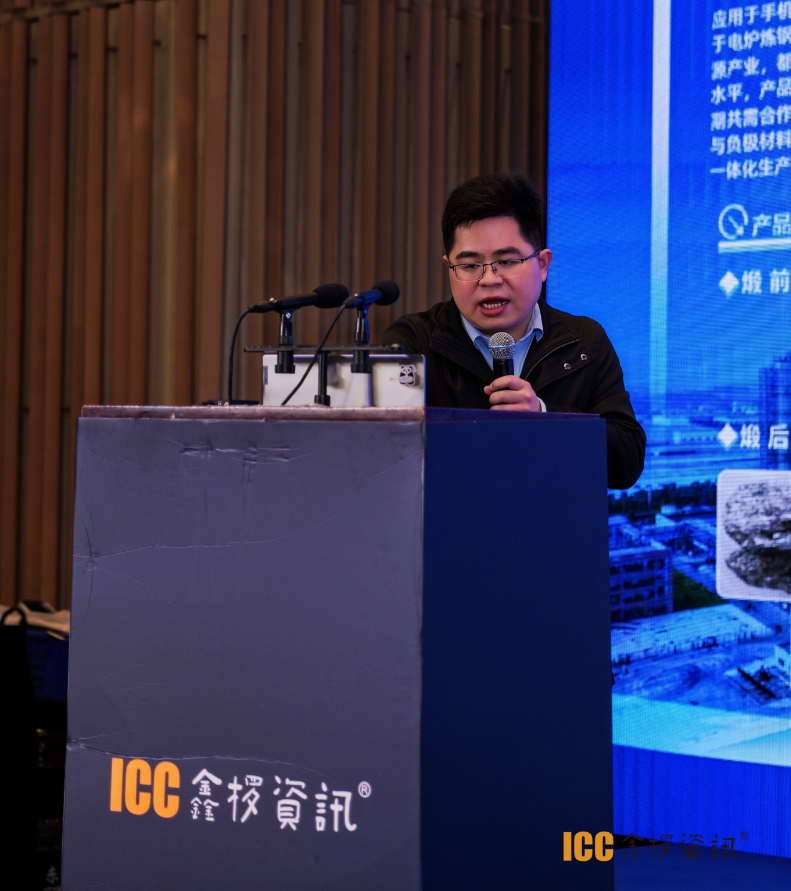
Wang Kun introduced the basic situation of Qingdao Xintaihe Nano Technology Co., Ltd. The company's headquarters and R&D center are located in Qingdao, with a factory area of 100,000 square meters. It is a company specializing in the production of anode materials for lithium-ion batteries. Its main products include natural graphite, artificial graphite, composite graphite, hard carbon, silicon carbon, etc. For anode materials, the total production capacity reaches 60,000 tons. The company's shareholder structure and subsidiary layout are also introduced.
Wang Kun also elaborated on Xintaihe’s core competitiveness in the anode material industry. Including having a complete vertical industrial chain of natural graphite anodes, being close to major power battery production areas to facilitate efficient services, being close to high-quality graphite ore resources, conveniently supplying ports and chemical raw materials, and having obvious geographical advantages. At the same time, the company also attaches great importance to research and development. The research institute covers an area of 3,000 square meters and is vigorously deploying the next generation of new anode materials.
In addition, Wang Kun also focused on Xintaihe's research and development ideas and application prospects in the field of fast-charging anode materials. First, the technical challenges faced by fast-charging batteries are analyzed, such as thermal runaway, polarization and other issues. For graphite fast-charging anodes, the performance can be improved through strategies such as gradient structure design, surface modification, and composite anodes. New anode materials such as hard carbon, lithium titanate, and silicon carbon also have certain application prospects in the field of fast charging, and Xintaihe is actively carrying out relevant research and development work.
Wang Zhiyong, deputy general manager/director of the research institute of Hunan Zhongke Xingcheng Graphite Co., Ltd.: Progress in lithium-ion battery anode fast charging technology
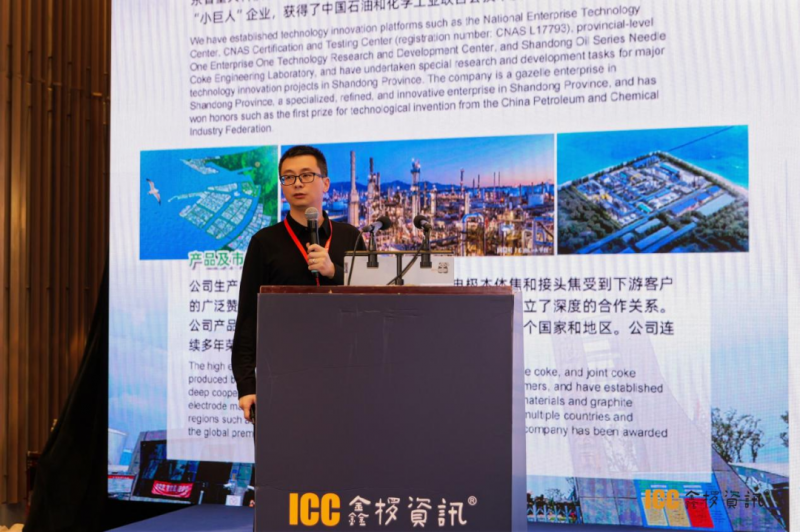
Wang Zhiyong systematically analyzed the development trend of the new energy vehicle and power battery markets, pointing out that with the rapid growth of the market, the demand for anode materials will continue to expand. However, at the same time, problems such as overcapacity and price wars have become increasingly prominent, and cost reduction has become a top priority for the industry. He emphasized that the company is addressing challenges from multiple levels, including process equipment upgrades, new anode material layout, mechanism exploration, and industrial chain collaboration .
He then introduced in detail the company's specific product development progress in the field of fast-charging graphite anode materials. The company has achieved a balance between fast charging performance, energy density and tap density through raw material pretreatment, secondary particle structure optimization, and fourth-generation coating process innovation. At the same time, the continuous liquid phase coating process developed by the company can increase production capacity, reduce energy consumption, and has excellent industrialization prospects.
Wang Zhiyong also listed the company's current series of fast-charging graphite anode products, which cover the needs of different scenarios such as high energy density, high cost performance and high rate. Finally, he looked forward to the future development route of fast-charging anodes, including the continued improvement of energy density and the pursuit of extreme fast-charging performance.
Dr. Chen Zhi from Shangtai Technology: Anode material technology iteration and cost control in the fast charging era

Chen Zhi first started from the global trend of electrification of new energy vehicles and elaborated on the importance of material system innovation in realizing the next generation of high energy density batteries. He pointed out that as battery structure innovation gradually reaches the bottleneck, material innovation will become a key part of the upgrading of the industrial chain. He also analyzed end-user needs for long battery life, fast charging, safety, etc., as well as the technical challenges that current fast charging systems still face in terms of thermal effects, lithium precipitation, and mechanical effects.
Chen Zhi also focused on the company's strength in the research and development of fast-charging anode materials. This includes a full set of analytical and testing capabilities from raw materials to finished products, and the introduction of advanced characterization methods; it has also established half/full battery research and development conditions, covering battery production and multiple performance tests. Finally, from the perspective of the carbon footprint of anode material production, he elaborated on the company's carbon reduction plan in terms of production capacity scale-up and green electricity use.
Guo Mingcong, deputy director of the Functional Materials Division of Sinosteel Anshan Thermal Energy Research Institute: Discussion on ways to reduce costs and improve quality of anode material raw materials
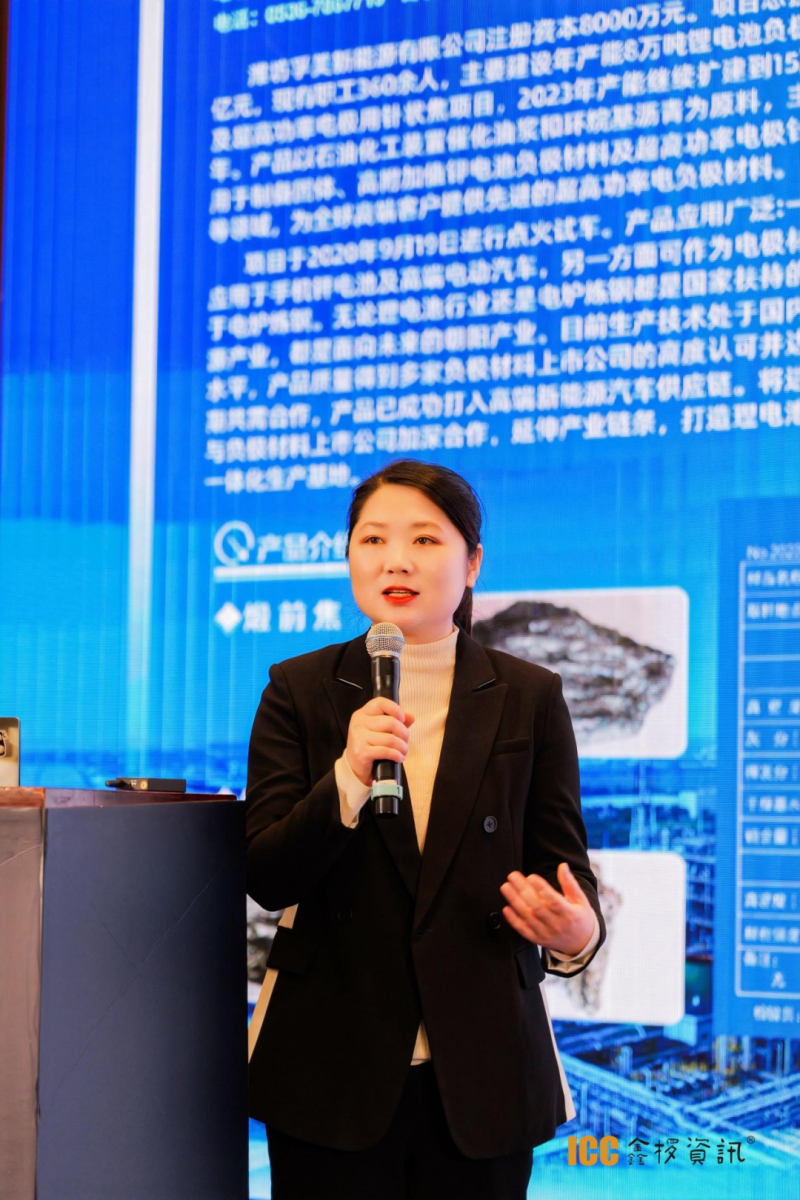
Guo Mingcong first analyzed the difficulties faced by the current lithium battery anode material industry. In recent years, the production capacity of anode materials has expanded too fast, supply has seriously exceeded demand, and industry competition has intensified. In this case, achieving misaligned competition through product differentiation, market segmentation, etc., reducing costs and improving quality will be the key to improving core competitiveness in the next 2-3 years. She reviewed the development history of anode materials, from mesophase carbon microspheres , artificial graphite to new anode materials.
As a raw material supplier of anode materials, Sinosteel Thermal Energy Research Institute has deep accumulation in the field of raw materials such as coke and asphalt. Guo Mingcong focused on the characteristics and preparation processes of different types of coke such as coal-based needle coke and petroleum coke, as well as the independent innovation results of Sinosteel Thermal Energy Research Institute in coke structure design and preparation process. At the same time, she also explained in detail the performance indicators and production processes of a variety of asphalt products developed by the company specifically for anode materials.
In addition to traditional raw materials, Guo Mingcong also introduced the latest research progress of Sinosteel Thermal Energy Research Institute in the field of new anode materials such as hard carbon and porous carbon. These innovations are expected to further reduce the manufacturing cost of anode materials, improve electrochemical performance, and inject new impetus into the sustainable development of the anode industry.
Ma Xuezeng, Chairman of Ximatong Technology: Quantitative production technology of homogeneous and equal anode materials
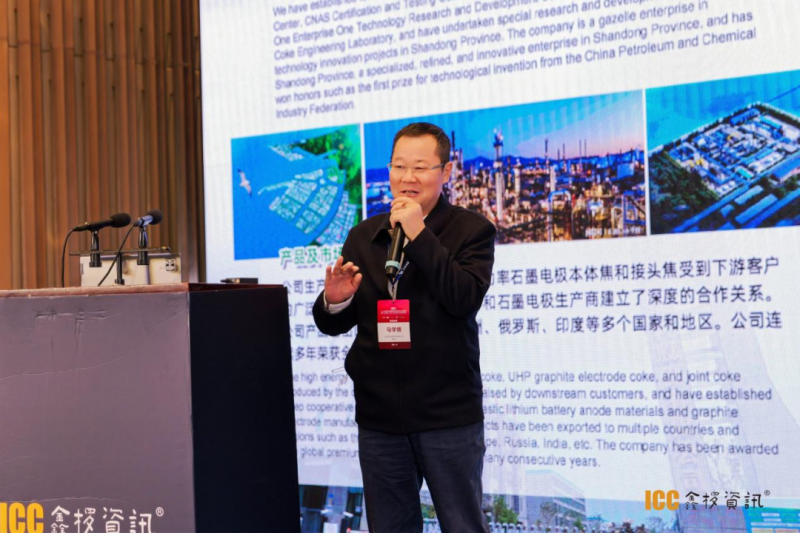
 Ma Xuezeng’s speech mainly focused on the application of homogeneous and equalization processes in the manufacturing of carbon materials. The core concept of this process is to achieve consistency of physical and chemical indicators at any position of the product and between different individuals through refined control, thereby comprehensively improving quality. Ma Xuezeng systematically elaborated on the specific application methods of this process in multiple aspects such as roasting curve optimization, kiln temperature field control, and emission control .
Ma Xuezeng’s speech mainly focused on the application of homogeneous and equalization processes in the manufacturing of carbon materials. The core concept of this process is to achieve consistency of physical and chemical indicators at any position of the product and between different individuals through refined control, thereby comprehensively improving quality. Ma Xuezeng systematically elaborated on the specific application methods of this process in multiple aspects such as roasting curve optimization, kiln temperature field control, and emission control .
In terms of roasting curve optimization, Ma Xuezeng introduced in detail the calculation method of accurately designing the coking reaction and volatile burnout curve based on parameters such as asphalt volume to ensure uniform cracking and shrinkage. In terms of furnace temperature field control, he elaborated on how to reduce three-dimensional temperature differences through combustion control, fine-tuning the furnace structure and other measures. In terms of emission control, he focused on reducing pollutant emissions by optimizing combustion and capturing tar.
Ma Xuezeng also shared multiple application cases of the homogenization and equalization process, such as the calculation of the service life of the homogeneous crucible and the reduction of the anode voltage, demonstrating the many advantages of reduced energy consumption and improved efficiency brought by this process. He finally concluded that the homogeneous and equalization process can achieve comprehensive improvement in quality and efficiency, energy saving and emission reduction of carbon material products through quantification and refined control of process parameters.
Cheng Hongxing, general manager of Sazhen Compressor: 8 pain points in the application of air compressors in the graphite industry and Sazhen’s energy-saving solutions
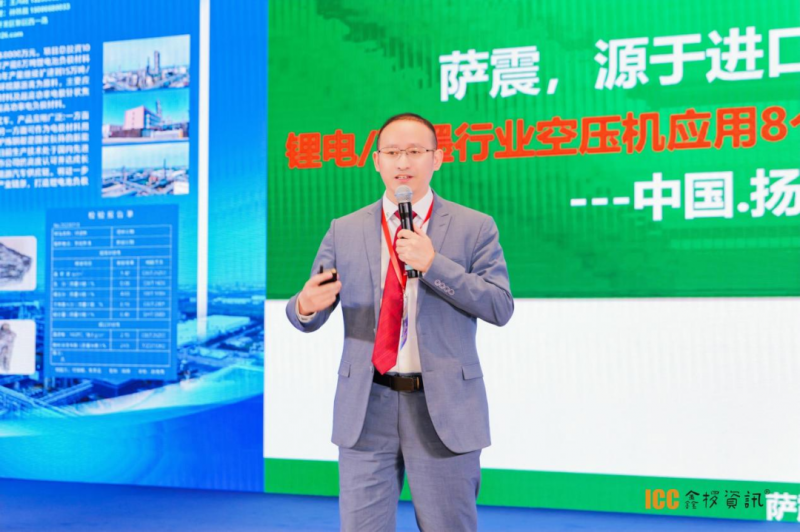
Cheng Hongxing raised a practical issue at the beginning: Among the various equipment in the enterprise, although the purchase cost of air compressors is not high, due to the extremely high energy consumption of long-term operation, its comprehensive use cost may be the highest. He emphasized that the most important thing when purchasing an air compressor is not the brand, but its stability and energy-saving performance.
Cheng Hongxing also listed 8 pain points encountered by the graphite industry when using air compressors: unreasonable solution design; shutdown due to high temperatures in summer; oil leakage problem; motor expansion failure; special process requirements for anode and cathode; excessive energy consumption; closed-loop transformation ;Lack of after-sales service. Focusing on these 8 pain points, he elaborated on the advantages of Sazhen compressor in energy-saving solutions: reasonable scheme design, anti-high temperature shutdown measures, oil leakage prevention technology, improved motor stability, meeting special process requirements, and multi-level energy saving Technology, professional closed-loop transformation, etc. And through data and cases, it illustrates the high energy efficiency advantages of Sazhen products.
Cheng Hongxing also shared Sa Zhen Company’s corporate philosophy, core values and future development vision. He hopes to work with more companies to jointly promote energy conservation and emission reduction and achieve sustainable development. Finally, he sincerely invited all the entrepreneurs present to actively cooperate with Sa Zhen.
Although China's anode material industry is currently facing severe challenges such as overcapacity and intensifying price wars, the speakers remain optimistic and confident about the future of the industry. They believe that by increasing investment in R&D and innovation, promoting automation and intelligent transformation, optimizing supply chain collaboration and other measures, they are fully capable of breaking through technological bottlenecks and achieving cost reduction and efficiency improvement. Especially in cutting-edge fields such as fast-charging anodes, silicon-carbon anodes, and energy storage anodes, Chinese companies have made great progress and have huge potential for future development.
Finally, as Li Fengfeng, chairman of Shanghai Shanshan Technology Co., Ltd., said, “ The common theme currently faced by Chinese anode material companies is to use innovation as the driving force, cooperate and develop in competition, and jointly rush to the future of the global new energy industry and create Open innovation is the driving force for the anode industry to create a new industry. "Only when anode material companies work together can the upstream and downstream of the industry chain achieve integrated development, promote the entire industry to enter a new stage of high-quality development, and jointly embrace new developments in the global layout. The future of energy.
ICC Lithium Battery focuses on tracking lithium battery raw materials, lithium batteries and their downstream related industry chains, collecting and researching market prices, market trends and other information. It tracks more than 400 manufacturing companies in the industry all year round and has a complete industry database. Provide customized reports according to enterprise needs and provide professional services to enterprises.
ICC Lithium Battery is research-centered and serves industry enterprises, financial institutions (primary and secondary market private equity funds/brokerages/banks, etc.), universities/scientific research institutes, governments, etc., providing customers with unique insights, analysis and resources to help Customers make efficient decisions to achieve high-quality business growth.




 CONTACT US
CONTACT US ICC APP
ICC APP
